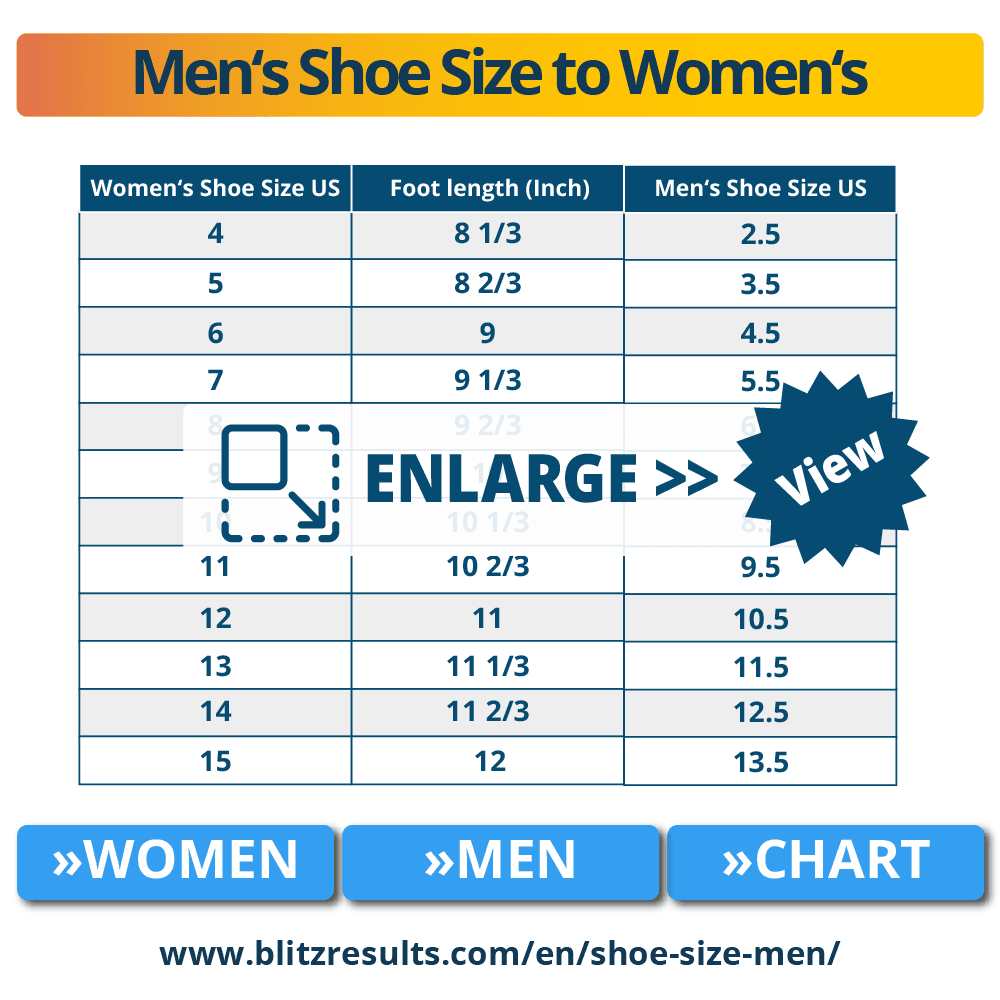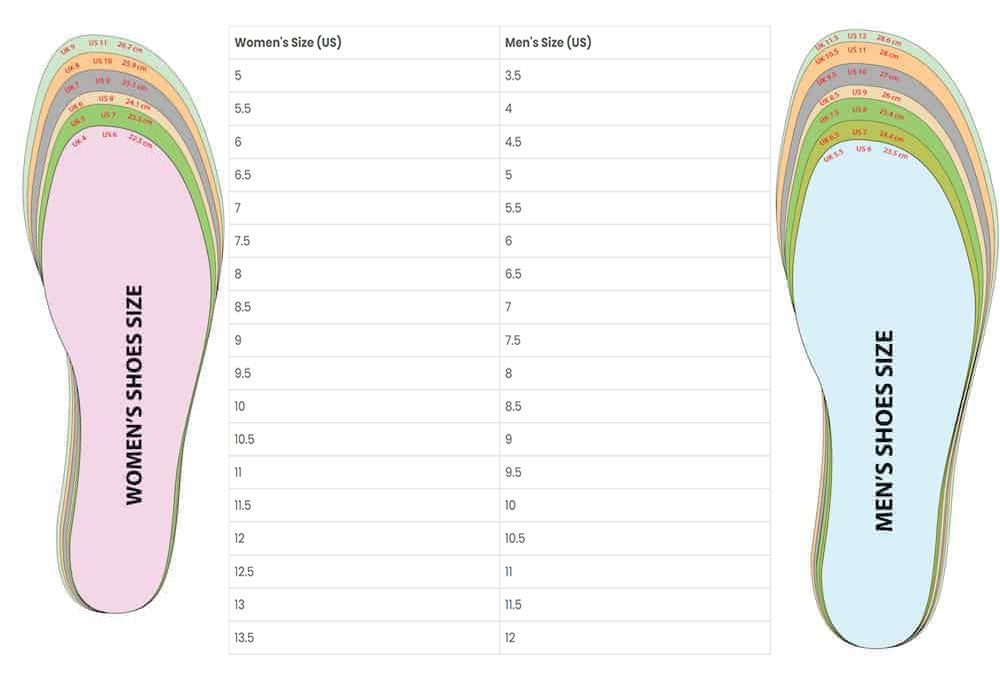When it comes to footwear, understanding size conversion is crucial, especially for those who love to experiment with styles across the gender spectrum. Whether you’re a man looking for a chic women’s sneaker or a woman seeking the perfect pair of loafers in the men’s section, this comprehensive guide will walk you through everything you need to know about converting men’s shoe sizes to women’s sizes with ease.
The Basics of Shoe Sizing
Footwear is one of the most essential aspects of any wardrobe. But did you know that shoe sizes can vary significantly between genders? Typically, men’s shoes are one to one and a half sizes larger than women’s shoes. Despite this general rule, brand variations and style differences can complicate the conversion process. Understanding these intricacies will help ensure you purchase the right fit, avoiding uncomfortable shoes that can lead to blisters and other foot problems.
Understanding Shoe Size Terminology
Before diving into size conversions, it’s essential to familiarize yourself with some common terms used in the footwear industry:
- Insole Length: The length of the shoe’s interior.
- Last: The mold upon which a shoe is constructed.
- Width: Refers to the shoe’s girth, an essential factor for comfort.
- Drop: The difference between the height of the heel and the height of the forefoot.
How to Convert Men’s Shoe Sizes to Women’s Sizes

Let’s tackle the heart of this guide: the actual conversion process. To convert men’s sizes to women’s sizes, you can use this simple formula:
Women’s Size = Men’s Size + 1.5

Size Conversion Examples
Here are some straightforward examples to demonstrate this conversion:

| Men’s Size | Women’s Size |
|---|---|
| 7 | 8.5 |
| 8 | 9.5 |
| 9 | 10.5 |
| 10 | 11.5 |
Keep in mind that this formula provides a general guideline. Variations do exist between brands, so it’s always advisable to try shoes on or check individual brand sizing charts prior to purchase.

Real-World Footwear Experiences
Case Study: John’s Journey to Finding the Perfect Fit

Let’s explore a real-world scenario involving John, a male shoe enthusiast. John found himself frustrated when he wanted to purchase a pair of stylish women’s sneakers to complete his trendy outfit. After realizing that his usual size didn’t fit well in the women’s section, he employed the conversion formula mentioned earlier. He was a size 10 in men’s shoes, which translated to a comfortable size 11.5 in women’s sneakers. This experience not only broadened his fashion choices but also highlighted the need for flexibility in shoe sizing.
Tips to Ensure a Perfect Fit

To ensure you always find the right fit, consider the following tips:
- Always Measure Your Feet: Foot sizes can change over time. Measuring your feet regularly can help you find the best fit.
- Read Reviews: Customers often share size-related advice in reviews. Use this information to gauge if a shoe runs small, large, or true to size.
- Try Them On: If possible, always try shoes on before purchasing, especially when switching between men’s and women’s sizes.
Comparing Shoe Widths: A Key Factor in Comfort
Width is an often-overlooked aspect of shoe fitting, yet it is critical for comfort. Men’s shoes typically have a wider fit than women’s. This can impact how shoes feel, especially if you have wide or narrow feet. Here’s a quick breakdown:
- Men’s Widths: D (standard), 2E (wide), 4E (extra wide)
- Women’s Widths: B (standard), D (wide)
Understanding Width Conversion
If you’re contemplating switching from men’s to women’s shoes or vice versa, understanding how widths change is crucial. A men’s “D” width is equivalent to a women’s “B” width, which means you may need to adjust your choice based on width as well.
Popular Footwear Choices: Men’s vs. Women’s
Many people prefer men’s styles for their aesthetic appeal, or simply because they are more comfortable. Here’s a list of popular styles for both genders:
Style Highlights
- Sneakers: Popular unisex styles are often found in both men’s and women’s lines.
- Loafers: Many men’s loafers can be easily worn by women.
- Boots: Combat boots and Chelsea boots are increasingly becoming gender-neutral.
Pros and Cons of Buying Men’s Shoes as a Woman
Pros
- Broader selection of styles, especially in chunky sneakers and boots.
- Potentially better durability and construction in certain designs.
- Often, men’s shoes are less expensive than women’s in certain brands.
Cons
- Fit can be tricky; men’s shoes may not cater to narrower female feet.
- Fashion may sometimes lean towards traditional gender norms.
- Certain styles may not be available in women’s sizes.
Product Highlights: Recommended Footwear for Size Conversions
Top Trends in Unisex Footwear
Fashion trends have evolved to become more inclusive. Here are some popular unisex shoes to consider:
- Adidas Stan Smiths: A classic sneaker that works universally for men and women.
- Converse Chuck Taylors: Available in both men’s and women’s sizes with an iconic look.
- Nike Air Force 1s: Stylish and versatile, these come in various colorways suitable for all.
FAQs about Men’s to Women’s Shoe Size Conversions
1. How do I know my shoe size in men’s if I’m used to women’s sizes?
You can convert your women’s shoe size by subtracting 1.5 from it. For example, if you wear a women’s size 8, you would wear approximately a size 6.5 in men’s.
2. Do all brands follow the same sizing chart?
No, sizing can vary widely between brands. It’s always best to check the brand’s specific size chart for accuracy.
3. What should I do if I fall between sizes?
If you are in between sizes, it’s generally recommended to choose the larger size for comfort, particularly in athletic and casual shoes.
4. Can I use insoles to adjust shoe fit?
Yes, using insoles is a great way to customize the fit, especially if you find men’s shoes to be slightly larger.
5. Are there any common foot problems with wearing the wrong shoe size?
Wearing the wrong shoe size can lead to blisters, calluses, foot cramps, and long-term issues like plantar fasciitis.
6. Is it common for women to wear men’s shoes?
Yes, it is increasingly common as people seek more comfortable, stylish options. Many women find that men’s shoes fit their style better.
7. What if I want to wear women’s shoes as a man?
There’s no problem at all! Just remember to convert your size correctly, and choose styles that make you feel confident.
8. Will wearing the wrong width affect fit?
Definitely. Wearing shoes that are too narrow or wide can cause a lot of discomfort and lead to foot problems.
9. Are there any online tools to help with shoe size conversion?
Yes, many retailers and websites offer online size conversion tools to help you find the right fit.
10. Should I size up or down when buying online?
If you’re unsure about your size, it’s usually better to size up, especially with casual or sporty shoes.
Conclusion: The Importance of Finding Your Fit
Understanding how to convert men’s shoe sizes to women’s sizes is essential for any shoe lover. Whether you prefer a clean pair of sneakers, robust boots, or stylish loafers, knowing your size will allow you to explore a broader range of footwear options. Remember to consider width, brand differences, and personal comfort when selecting your next pair. Armed with this knowledge, you can confidently shop for shoes that not only fit well but also complement your unique style and personality.
So, don’t hesitate to step outside your comfort zone and experiment with different styles. After all, the world of footwear is vast and waiting for you to discover your next favorite pair!